Archive for July, 2022
Is it Time we Scrap the Luxury Car Tax?
Following changes to the thresholds for the luxury car tax, the future of the impost is once again in the spotlight, especially now that Australia’s days of local auto manufacturing are well and truly in the rear-view mirror. The measure was first introduced with the intention to help protect local manufacturers amid the slew of high-spec vehicles that one can only assume were deemed to be an ‘impediment’ to jobs and the economy.
On the back of the changes in 2022, the 33% tax applying to imported vehicles less than two years of age now covers a value in excess of $71,849 including GST, or a threshold of $84,916 for fuel-efficient vehicles where that car consumes no more than 7L of fuel per 100km.
Given the tax contributes hundreds of millions of dollars to the Federal Budget, it’s not like the government doesn’t have an incentive to prop up another tax as long as Joe Public foots the bill. That’s despite the fact that the tax has long been considered a thorn in the side of the European Union and negotiations of a free trade agreement. But while the amount of tax proceeds may seem vital to the country, the costs to administer the tax are arguably as much as what it reaps.

What circumstances have changed?
One of the key differences now, as opposed to when the tax was first introduced, is that the new car industry is in a dire position thanks to the global supply chain crisis, as well as issus securing stock. Interest rates are now on the rise, but even at historic lows, the industry has been seeing sales slide for some months now after a brief respite. All the while, more buyers are transitioning to SUVs and other more-affordable and reliable brands.
In addition, the impact of the tax on some of those hardest-hit by natural disasters has started to unfold. More specifically, many farmers have bought vehicles that are slapped with a luxury car tax – and no, they’re not driving around in Mercedes AMGs or Ferraris for that matter, but workmanlike vehicles such as the Toyota LandCrusier or Prado – yet all the while, the effects of natural disasters continue to weigh on their livelihood. Motorists are ultimately the ones who foot the bill for the LCT, even though it was designed to be absorbed by dealerships.

The reality of the situation
Frankly, at the end of the day, Australians shouldn’t be slugged to protect an industry that no longer exists. The local manufacturing industry, while beneficial from a jobs perspective, was artificially supported for longer than was ever realistic or sustainable. In fact, it’s easy to argue that the plug should have been pulled on the LCT earlier, back in 2017 when Holden ceased manufacturing operations.
Even if the government has a vested interest in maintaining an otherwise unnecessary tax, the mechanics of it just don’t make sense when not only has it not been tied to inflation – that would mean higher thresholds that are more ‘friendly’ to new car buyers to day – but we are supposed to be trying to encourage people to adopt fuel efficient cars. Yet, here we are, punishing motorists who purchase ‘eco-friendly’ vehicles. That the luxury car tax has lasted this long, is a true surprise, particularly if we’re keen to stave off a potential recession. Let’s not even get started on those unnecessary import tariffs either…for now at least.
Could a Citroën ë-Jumpy Hydrogen be Feasible in Australia?
Currently (July 2022) in Australia, hydrogen refuelling stations are found in Melbourne, Sydney, and Brisbane. Green hydrogen (H2) is a cleaner fuel for running a motor to power a vehicle. H2 is produced using electricity that has been made from renewable resources (sun, wind, hydro) and is one effective way to aid the reduction of unwanted gas emissions. Hydrogen is also the simplest and most abundant chemical element in nature that is almost always bound to another element. It can be used as a clean and inexhaustible energy. You can even create a hybrid vehicle where hydrogen and batteries can combine to propel a hydrogen-ev forwards.

Citroen have created a great light commercial van called the Citroën ë-Jumpy Hydrogen. While it is currently only sold in a few markets in Europe (where there are many more hydrogen refuelling stations), the light commercial van combines the best technologies of a hydrogen fuel cell and a battery for motoring. Perhaps we might be able to get an ë-Jumpy Hydrogen van in Australia to run the Melbourne to Brisbane Hydrogen Highway?
Citroën’s entire light commercial vehicle (LCV) range is already fully electrified overseas, and Citroen say that the ë-Jumpy Hydrogen offers the widest electrified range to meet the heavy demands of business professionals. Citroen Australia is yet to bring any of these ev vans to Australia.
The Citroen ë-Jumpy Hydrogen van has a hydrogen fuel cell and rechargeable batteries, the first Citroën powered by this form of energy. While accommodating this new hydrogen/electric technology, it still manages to retain the practical volume and load carrying capacity. The hydrogen and electric components are integrated into the van’s ingenious design, ensuring that the componentry sizes have no impact on load capacity.

Citroën ë-Jumpy Hydrogen LCV has a range of over 400 km. The three 700 bar carbon-fibre hydrogen tanks are stored on the horizontal below the load floor, which sit next to the battery under the front seats. These hydrogen tanks can be filled in just three minutes!
So how does it all work? The Citroën ë-Jumpy Hydrogen LCV is a fully electric vehicle and benefits from a 45 kW fuel cell that produces electricity by consuming hydrogen. A 10.5 kWh battery takes over automatically once the hydrogen tank is empty. The battery itself is automatically charged using electricity that is generated by consuming hydrogen or by using a cable at any typical electric-vehicle charging station.
The Citroen ë-Jumpy Hydrogen has identical specifications to the Peugeot e-Expert Hydrogen and Opel Vivaro-e Hydrogen vans in the UK. Citroen say that the ë-Jumpy Hydrogen LCV is for businesses that need more than the standard EV van’s 300 km of driving range, or for those who have no time to wait around recharging before getting to the next job. The Citroën ë-Jumpy Hydrogen is expected to offer over 400 km (249 miles) of driving range.
Citroen say that Battery Electric Vehicles (BEVs or EVs) are perfect for all applications with range requirements of 100-300 km a day if there is access to overnight charging. But with the improvements in battery technology leaping forward, time is currently on the side of BEVs/EVs.
Citroën ë-Jumpy Hydrogen specs include:
a total range of over 400 km
3-minute refuelling of the hydrogen tanks
three 700-bar hydrogen tanks (70 MPa), with 4.4 kg of hydrogen under the floor when at full capacity
range with 10.5 kWh battery only being used: 50 km
front-wheel drive
100 kW of power and 260 Nm of torque developed from the permanent magnet electric motor
an 11 kW three-phase on-board charger
2 van lengths available (Medium 4.95 m long, and XL 5.30 m), with the same loading volume characteristics as any equivalent diesel or purely electric versions
cargo space of 5.3 m3 to 6.1 m3
payload up to 1100 kg
towing up to 1000 kg
Chrysler Airflow EV Concept
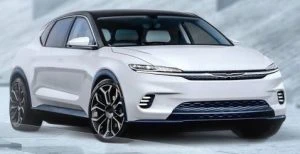
Chrysler Airflow EV Concept
For me, there are two cars in particular I enjoy seeing, and both for which proudly wear the Chrysler badge. I always take the time to admire them every time I walk past one on the street, or I’ll enjoy watching one as it rolls by out on the road. For me, the Chrysler 300 and the Chrysler Valiant are two great looking cars that provide plenty of power, comfort, and a special drive.
The Chrysler 300 came directly out of the American Chrysler line-up, and it offered a gangster-style (chunky, high waistline, plenty of power, large grille) with luxury and comfort, sedan or wagon. The Chrysler Valiant was a full-size car which was sold by Chrysler Australia between 1962 and 1981. To begin with, Chrysler Australia received the Plymouth Valiant from the United States and rebadged it to sell to the Australian market. However, from the second generation, which was launched in 1963, the Valiant was fully manufactured in Australia. The late 70s versions of the Valiant was my favourite.
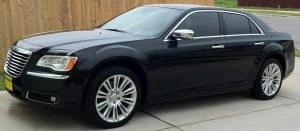
Chrysler 300
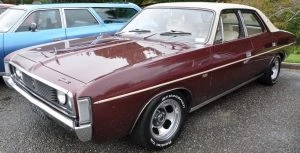
Chrysler Valiant
So, what’s happening in Chrysler’s corner today?
January 2014 saw Fiat S.p.A. announce a deal to purchase the then struggling Chrysler brand, making Chrysler Group a subsidiary of Fiat S.p.A. In May of that year, Fiat Chrysler Automobiles (FCA) was established by merging Fiat S.p.A. By the end of the year, this group was renamed FCA US LLC to reflect the Fiat-Chrysler merger.
In 2021, Stellantis N.V. was formed, which is a multinational automotive manufacturing organization that is made up of a half-and-half merger between the Italian-American company Fiat Chrysler Automobiles (FCA) and the French PSA Group. Stellantis is headquartered in Amsterdam, and, in terms of a global scale, in 2021 Stellantis was rated as being the world’s 5th largest automaker behind Toyota, Volkswagen, Hyundai, and General Motors.
Though at the moment there aren’t a load of new cars with the Chrysler logo coming out, Stellantis is aiming to be an all-electric brand before 2030. At a recent show in America, Stellantis revealed a rather nice-looking Chrysler Airflow concept, suggesting that there is a lot more to come from Chrysler in the future.
Inside the Chrysler Airflow cabin is seating for four. Plenty of recycled materials and vegan leather are just some of the interior features on offer. It is a luxury car with a full panoramic glass roof, ambient lighting, and excellent sound proofing.
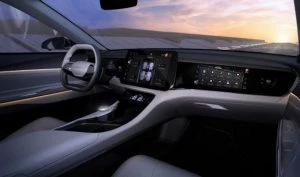
Chrysler Airflow EV Concept
Underpinning the new STLA EV platform, Stellantis made the Chrysler Airflow concept a reality, choosing this car for showing off the Airflow’s latest innovative drive-system technology that is fully connected to customer interaction and advanced mobility. The Airflow emphasises Stellantis’ desire to be cutting edge, to keep up with connectivity, and to produce sophisticated digital interaction.
The Chrysler Airflow EV concept boasts STLA Brain and STLA Smart Cockpit technology that connects passengers with their own digital lives. Thus, there are display screens front and rear, which are configured to suit each occupant, and these individual screens can interface with other screens inside the car using sweeping gestures. Each seat has its own camera, which can also be used for video conferencing as well as selfies. The Airflow EV also has autonomous driving capability, with power delivered by two electric motors, one on the front axle and one on the rear axle. Each electric motor on the concept Airflow boasts 150 kW, with a driving range said to be somewhere in the vicinity of 550–650 kilometres.
Certainly, the Chrysler Airflow EV concept is a neat looking Electric Vehicle, with tidy exterior lines, excellent aerodynamics, a long wheelbase, and a wide stance with a low profile. It would be swift, luxurious transport, fitting for the Chrysler brand, and a nod to the Chrysler greats.
Braking Systems in Today’s Cars
You might not have realised it before, but there are a number of different braking technologies incorporated into today’s latest range of cars. They might fly under the radar, if anything, but all those acronyms are more than just an abbreviation, they are a life-saving invention designed to look after your safety. So, what are the different types of braking technology?
The Pioneering Systems
One of the early systems introduced into cars was ABS. This was something that the industry latched onto and proudly trumpeted. ABS is Anti-lock Braking System.
Before ABS arrived there were two kinds of braking styles. Most of the time it was hard on the brake pedal and look out for black smoky trails. Or there was the canny driver that would “feather” the pedal and raise and lower the braking foot to not lock up the brakes.
ABS does the same thing as the second technique, albeit faster than we could ever hope to achieve. Computer controlled sensors will have the brake pads grip and release the brake discs, slowing forward progress but not stopping the whole wheel from rotating or locking up. This increases your control over the car’s handling.
Early versions of ABS had all four wheels controlled by one or two sensors, however, it’s pretty standard now that each wheel’s brake is controlled independently.
Meanwhile, TC refers to Traction Control. A long time ago, when manual gearboxs, thirsty engines, and a heavy right foot would combine to perform a “burnout”, where the grip or traction of a tyre became less than the intended design, they’d spin and the heat would warm the rubber to a point where the tyre would begin to smoke.
Traction Control stops this from happening. Whether it’s intentional, or in the case of either climbing a wet bitumen road, or turning a sharp corner at slow speed then accelerating, a computer sensor steps in and reduces power momentarily to reduce the lack of traction.
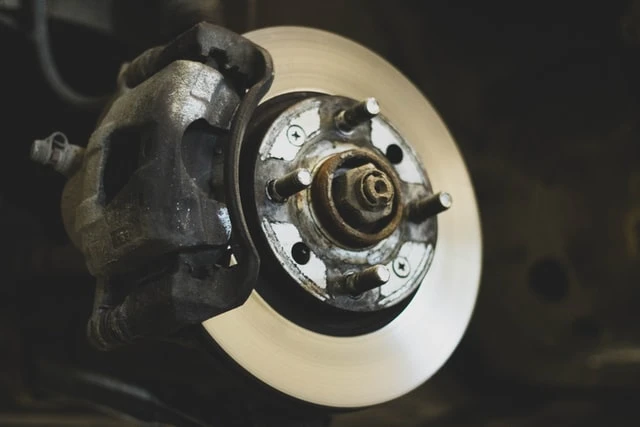
The Modern-Day Systems
ESP/VSC is Electronic Stability Program or Vehicle Stability Control. It is also referred to as DSC (Dynamic Stability Control) or ESC (Electronic Stability Control).
In essence, each of these systems do the same thing. They combine with Traction Control and rely on electronic sensors to measure wheel rotation speed, the direction of travel of the vehicle, the angle of the vehicle, and if a pre-programmed point of no return might be reached. At this point, the stability program will apply brakes to the wheel, or wheels it deems require assistance.
This can be done without the driver being aware. On a wet and greasy road the system may quietly work in the background. By gently applying braking force, the system helps the car stay on a straighter, tighter, driving line.
EBD, or Electronic Brake Distribution, is a form of brake technology that automatically varies the amount of force applied to each of a vehicle’s wheels, based on road conditions, speed, and loading. It works hand-in-hand with ABS.
Finally, there’s BA, or Brake Assist. It provides extra braking pressure if the car’s onboard computers think it’s required. In today’s cars, this tends to be partnered with a forward-looking sensor setup and cruise control.